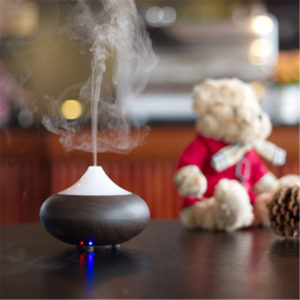The Scott family were away for just half an hour and returned home to find Einstein, their Shih Tzu/silky terrier mix, had thrown up several times and was disoriented. He had gotten into a backpack and eaten some gum. An Internet search led the family to believe that since Einstein had thrown up he would be OK. But the little dog wasn’t getting better.
“It was when he went totally limp in my husband’s arms that we called Animal Poison Control,” said Spirit Scott, a Traveling Leash dog walking client.
Einstein had eaten xylitol gum, which is promoted by dentists as the best gum for kids but is extremely toxic for dogs. According to the ASPCA’s Animal Poison Control Center (APCC), xylitol causes a dog’s blood sugar to drop rapidly, can lead to acute liver failure and coagulopathy (a bleeding disorder). The symptoms can be rapid, occurring within 30 minutes to two hours after ingestion and include vomiting, weakness, lethargy, difficulty walking (ataxia) and seizures.
Einstein was rushed to the emergency room where he was immediately put on an IV. He was in the hospital for three days at a cost of $2,400. It was another week before the little dog stopped throwing up and started acting like a puppy again.
 Einstein, a member of the Traveling Leash dog walking family, spent three days in the hospital and a week recuperating at home after ingesting xylitol gum. Photo courtesy of Spirit Scott
Einstein, a member of the Traveling Leash dog walking family, spent three days in the hospital and a week recuperating at home after ingesting xylitol gum. Photo courtesy of Spirit Scott
Xylitol is in More Than Gum
Experts at the Pet Poison Helpline (PPH) caution pet owners that xylitol is gaining popularity in sugar-free foods, oral care products, and dietary supplements. In addition to gum, common products that contain xylitol include:
• Toothpaste
• Mouthwash
• Peanut butter
• Sugar-free candy
• Sugar-free breath mints
• Fruit drinks
• Jellies and jams
• Cereals
• Baked goods
• Sugar-free puddings and Jello
Preventative Pet provides a round-up of products that contain xylitol. If you opt to use xylitol-containing products in your household, be sure to keep them completely out of your dog’s reach.
“Xylitol gum is now banned from our house,” Scott said. “We can’t trust that the kids won’t leave the gum lying around on an end table or in their backpacks. I just wish when dentists promote gum with xylitol to parents that they would also caution them about the dangers it poses to pets.”
If Your Dog Ingests Toxins, Seek Professional Help Immediately
Veterinarian Eric Jon Midlarsky of Cornwall Veterinary Hospital said if you suspect your dog has ingested a toxic substance call your veterinarian for professional advice. Hearsay on the Internet that may include waiting for symptoms or inducing vomiting could be detrimental to your pet.
“Every case is different and just because something worked for one person’s dog doesn’t mean it will work for yours,” Midlarsky said. “What’s toxic to one dog might not be to another because of size differences.”
Midlarsky said that depending on the toxins, there may be no signs early on and by the time you do see symptoms, it could be too late. You should also never induce vomiting without first speaking with a veterinarian. In some cases, vomiting can cause severe consequences, such as irreversible damage to the esophagus.
In case of an emergency, make sure you have the numbers for your veterinarian, a local 24-emergency animal hospital and the Animal Poison Control or Pet Poison Helplines saved in your cell phone. Also, consider listing these numbers on a card and sticking on your fridge and/or in your pet’s First Aid Kit.
Know What Toxins Are in Your Home
March is Pet Poison Prevention Awareness Month and a perfect time to take stock of toxins that may be around your home. Aside from products containing xylitol, here are other common household products that are toxic to dogs:
Chocolate
When it comes to toxins the most common call to Cornwall Veterinary Hospital is regarding dogs who have eaten chocolate. There’s a huge range of toxicity when it comes to chocolate, Midlarsky said. For example, it would take a lot of milk chocolate to get an 80-pound dog toxic. But a 4 or 8-ounce bar of baker’s chocolate is highly toxic to an 80-pound dog because of the greater concentration of theobromine and caffeine.
“When a dog ingests chocolate, we have to determine the type of chocolate, the size of the dog, the range of toxicity and then make a judgment call,” Midlarsky said.
Grapes/raisins/currants
According to toxicologists, grapes, raisins and currants can cause acute kidney failure in dogs. Because there is no known toxic dose for these fruits any ingestion should be considered potentially toxic.

Onions/garlic/chives/leeks/shallots
When ingested in large enough quantities these toxins can destroy the red blood cells in dogs causing anemia.
Alcohol
Alcohol or ethanol toxicity can occur when an animal ingests alcoholic beverages or other alcohol-based products such as hand sanitizer or yeast bread dough. According to the APCC, ingestion of alcohol can cause vomiting, diarrhea, decreased coordination, central nervous system depression, difficulty breathing, tremors, abnormal blood acidity, coma and even death.
Human Medications
Some common human medications such as Tylenol and Advil are extremely poisonous to pets.
“People think you can give human medications to dogs. You can’t,” Midlarsky said.
While aspirin can be safe at proper doses for dogs, you need a veterinarian to tell you what that safe dose is.
“You will see a lot of recommended aspirin doses online, which are incorrect,” Midlarsky said. “You have to ask your vet, otherwise we don’t recommend giving human medication to pets.”
The PPH receives many calls from people who accidentally gave their own medication to a pet. Hotline experts advise storing human medications separately from pets’ medications.
Cleaning Products
Pets should be kept away from cleaning products and kept out of the room while spraying cleansers or other products. Close toilet lids to keep dogs from drinking the water, especially if you use automatic chemical tank or bowl cleansers.
Plants
Common household plants that are toxic to dogs include:
• Lilies – certain varieties are toxic including the peace lily, calla lily, amaryllis, and lily of the valley
• Devil’s Ivy – also known as pothos
• Snake Plant – also known as golden bird’s nest or mother-in-law’s tongue
• Aloe Vera
• Cyclamen

Essential Oils and Potpourri Products
In an article on Essential Oil and Potpourri Poisoning in Dogs veterinarians, Charlotte Flint and Ahna Brutlag write that essential oils and liquid potpourris contain chemicals that are rapidly absorbed orally or through the skin. According to these veterinarians, very young dogs and puppies, and dogs with liver disease are more sensitive to the effects of essential oils. In addition, they write:
“Liquid potpourri and some essential oils can also irritate or burn the skin and mouth. Only a couple of licks or a small amount on the skin could be harmful to a dog, depending on the ingredients in a specific product and how the pet is exposed.”

Essential oils that are known to be poisonous to dogs include:
• Cinnamon
• Citrus
• Pennyroyal
• Peppermint
• Pine
• Sweet birch
• Tea tree (Melaleuca)
• Wintergreen
• Ylang-ylang
Antifreeze
Antifreeze, which often contains ethylene glycol (EG), can be extremely dangerous to dogs. According to the Pet Poison Hotline, other sources of ethylene glycol include windshield deicing agents, motor oils, hydraulic brake fluid, developing solutions for photography, paints and solvents. Some “pet-safe” antifreeze products contain propylene glycol, which is much safer if ingested by pets according to experts.
Pesticides and Insecticides
Today’s pesticides are much safer than products used 30 years ago, according to the PPH. Examples of newer pesticides include fipronil, imidacloprid, sulfuramide and hydramethylnon. However, these products are mixed with bone meal, which makes them attractive to dogs. While the bone meal doesn’t pose a significant toxicity concern, helpline experts say that it can cause gastrointestinal irritation and severe pancreatitis.
Fertilizers
Most fertilizers contain varying amounts of nitrogen, phosphorus and potassium. In addition, they might also contain iron, copper, zinc, cobalt, boron, manganese and molybdenum. Some of these may be toxic if ingested in large concentrations.
Fertilizers may also contain herbicides, pesticides, and fungicides all of which increase the risk of poisoning. When ingested in small amounts fertilizer may cause mild stomach upset, according to toxicologists. However, when a large amount is ingested, it can lead to severe poisoning.
Play it Safe by Dog-Proofing Your House
When it comes to keeping your dog safe in the house think about what you would do if you had a toddler in the family.
“Dog-proofing a house is exactly the same as baby-proofing a house,” Midlarsky said. “I have a dog who knows how to get into the garbage, and I had to use a child safety lock to keep him from getting into trouble.”
Animal hospitals offering emergency services in Orange County:
• Orange County Animal Emergency Service, 517 Route 211 East, Middletown. 845-692-0260
• Flannery Animal Hospital, 789 Little Britain Road, New Windsor. 845-565-7387
• Animal Emergency Clinic of the Hudson Valley, 84 Patrick Lane, Poughkeepsie. 845-471-8242
24/7 Pet Poison Helplines:
ASPCA Animal Poison Control Center: (888) 426-4435
Pet Poison Helpline: 855-764-7661
Photo credit: Flickr
